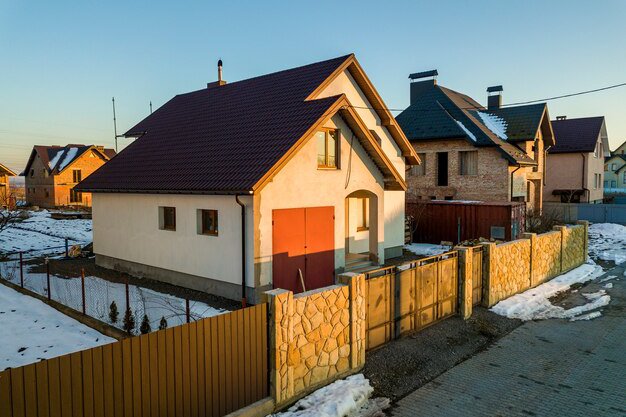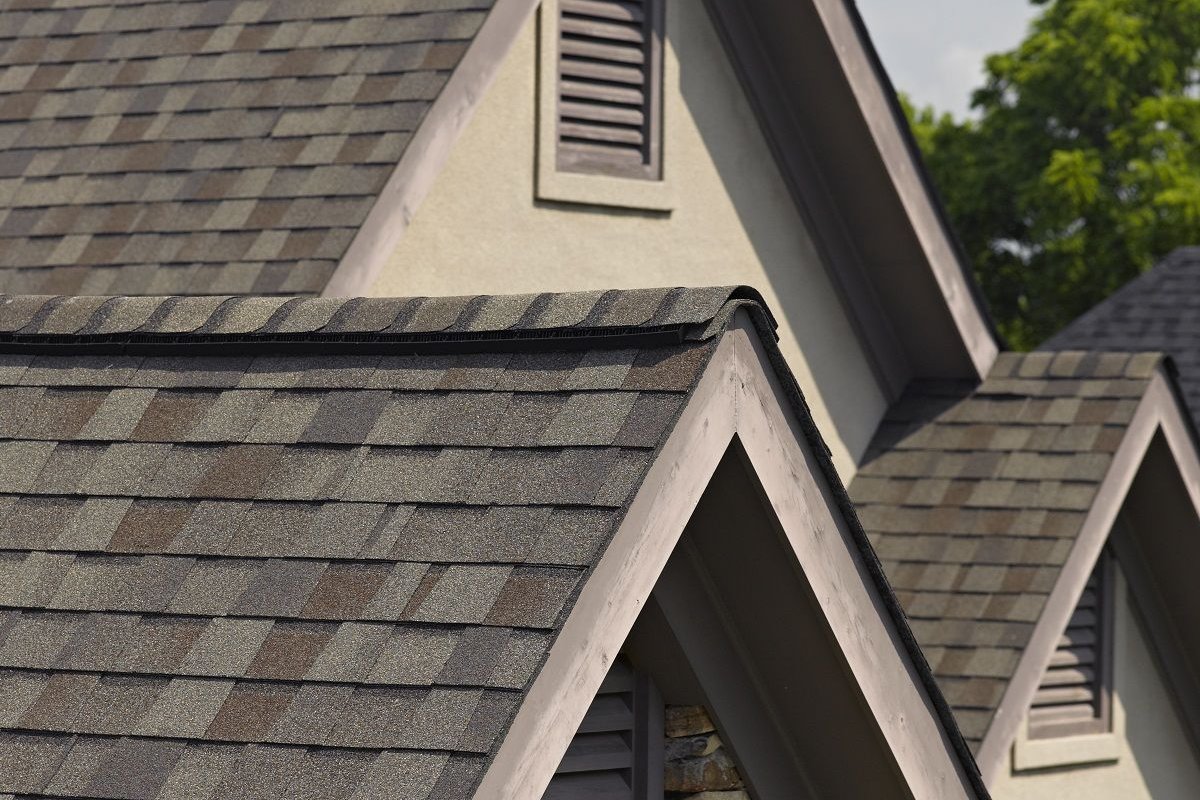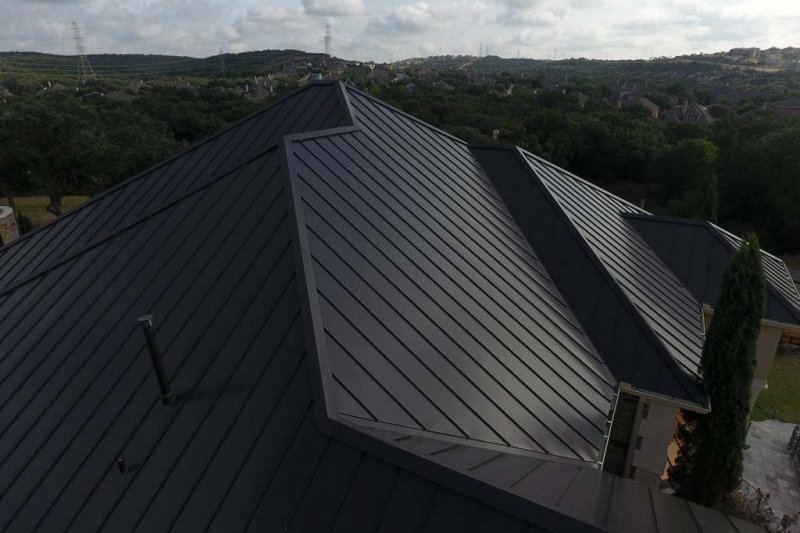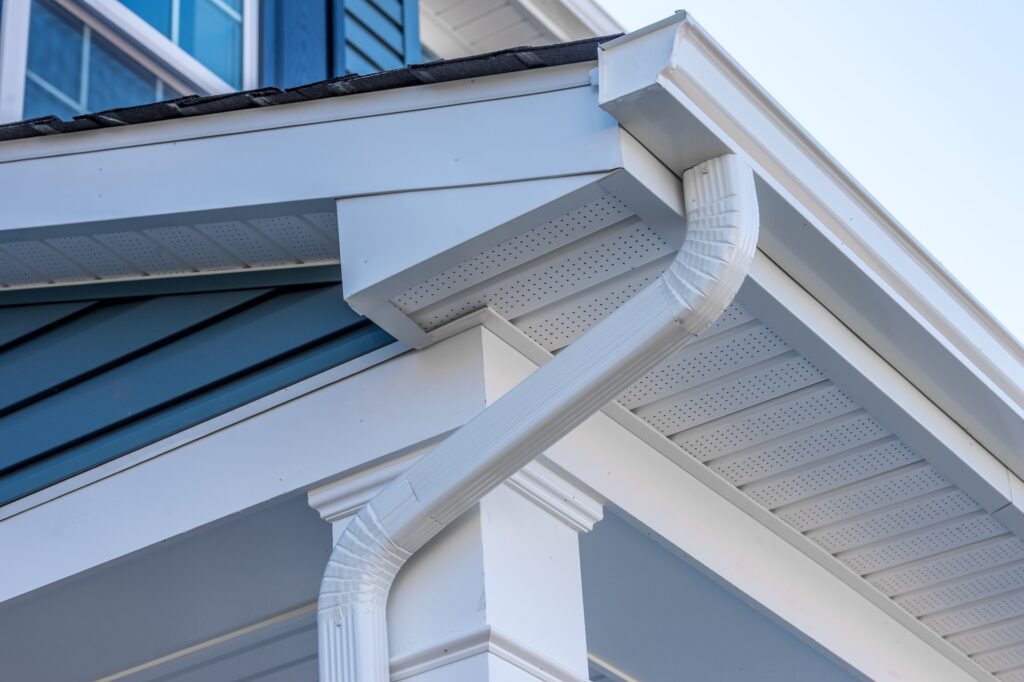Choosing the Best Roof Decking: Plywood vs. OSB for Troutdale, Oregon Homes
The roof over your head is more than just shingles; it's a complex system designed to protect your home from the elements. A fundamental, yet often overlooked, component of this system is the roof decking, also known as roof sheathing. This is the structural layer that is fastened directly to the rafters or trusses, providing a solid base for the underlayment and the final roofing material (like shingles, tiles, or metal panels). Choosing the right roof decking material is crucial for the structural integrity, durability, and overall performance of your roof. For homeowners in Troutdale, Oregon, understanding the options is key to making an informed decision during a new roof installation or a significant repair project. While various materials exist, the vast majority of residential roofs in the region rely on either Oriented Strand Board (OSB) or plywood for this critical layer. Both are engineered wood products, but they have distinct characteristics that impact their suitability, especially when considering factors like moisture exposure and long-term performance.
What is Roof Decking and Why Does it Matter?
Roof decking serves several vital functions. Primarily, it provides a continuous structural surface that distributes loads (like snow, wind, and the weight of the roofing materials themselves) evenly across the roof frame. Without adequate decking, the roof structure would be unstable and unable to support the weight and forces placed upon it.
Secondly, the decking acts as the substrate to which all subsequent layers are attached. The underlayment, which provides a secondary barrier against moisture, is rolled out and fastened directly to the decking. The final roofing material, whether asphalt shingles, metal panels, or tiles, is then nailed or screwed through the underlayment into the decking. The ability of the decking to hold these fasteners securely is paramount to preventing blow-offs and maintaining the weather-tightness of the roof.
Finally, the decking contributes to the overall shear strength of the roof structure, helping it resist lateral forces such as high winds or seismic activity. A strong, stable decking material is essential for a roof that can withstand the varied weather conditions common in the Pacific Northwest.
The Main Contenders: OSB vs. Plywood
When it comes to residential roof decking, the choice typically comes down to two engineered wood products:
Oriented Strand Board (OSB): Manufactured from compressed layers of wood strands, typically from fast-growing trees, bonded together with adhesives under high pressure and heat. The strands are oriented in specific directions (hence the name) to provide strength. OSB is often identifiable by its flake-like surface texture.
Plywood: Created by layering thin sheets, or veneers, of wood veneer in alternating directions. These layers are bonded together with adhesive. Plywood is graded based on the quality of the face and back veneers and the type of adhesive used. For roof decking, construction-grade plywood, commonly referred to by grades like CDX, is most often used.
Both materials are widely available, cost-effective compared to solid lumber sheathing, and meet minimum building code requirements when installed correctly. However, their manufacturing processes result in different physical properties that become apparent under real-world conditions, particularly concerning moisture and durability over time.
A Detailed Comparison: OSB vs. Plywood Performance
Understanding the nuances between OSB and plywood performance is key to choosing the best material for your roof's longevity. Let's break down the critical factors:
Strength and Structural Performance
Both OSB and plywood are designed to provide adequate structural support when properly sized and installed according to building codes. They both contribute to the roof's shear strength. However, there are subtle differences:
- Plywood: The cross-laminated veneer structure gives plywood excellent dimensional stability and strength in both directions across the panel. It has a high strength-to-weight ratio.
- OSB: While strong along the direction the strands are oriented, OSB can sometimes show slightly less consistent strength properties across the entire panel compared to plywood. Its strength relies heavily on the adhesive bond between the strands.
For standard roofing applications, both materials generally meet the necessary load-bearing requirements. The difference in strength becomes more apparent when panels are subjected to stress over long periods or under adverse conditions.
Moisture Resistance
This is arguably the most significant point of difference between OSB and plywood, and it's particularly relevant in a climate with significant rainfall and humidity.
- Plywood (especially CDX): Plywood, particularly the exterior-grade or CDX (C-grade face, D-grade back, Exterior glue) commonly used for sheathing, uses adhesives designed to withstand moisture exposure. While not waterproof, plywood tends to absorb and release moisture more evenly than OSB. When it gets wet, it will swell, but it generally returns closer to its original dimensions upon drying. The layered structure allows it to handle moisture cycles better without significant degradation of its core structure.
- OSB: OSB uses different adhesives and its compressed strand structure makes it more susceptible to moisture damage. When OSB gets wet, especially repeatedly or for extended periods, the edges are particularly prone to swelling. This swelling can be significant and, critically, OSB often does not return to its original thickness upon drying. This permanent swelling along the edges creates unevenness on the roof deck, which can lead to issues with the overlying shingles or other roofing materials, potentially causing them to buckle or lift prematurely. The core of the OSB panel can also degrade if exposed to moisture for too long, weakening its structural integrity.
Important Tip: Proper roof ventilation is absolutely essential for managing moisture within the attic space, regardless of the decking material used. Good ventilation helps prevent moisture buildup that can damage decking and shorten the lifespan of your entire roofing system.
Dimensional Stability
Dimensional stability refers to how much a material expands or contracts with changes in temperature and humidity.
- Plywood: Due to its cross-laminated structure, plywood is generally more dimensionally stable than OSB. It exhibits less expansion and contraction with environmental changes.
- OSB: OSB can be more susceptible to expansion, particularly when exposed to moisture. As mentioned, edge swelling is a common issue. This lack of dimensional stability can contribute to roof decking problems over time.
Fastener Holding Capability
The ability of the decking to hold nails or screws securely is vital for keeping shingles and other roofing components attached, especially during high winds.
- Plywood: Plywood generally offers superior fastener withdrawal resistance. Nails or screws driven into plywood are held firmly by the multiple wood veneers.
- OSB: While adequate when dry, OSB's ability to hold fasteners can be compromised if the material becomes wet and the core integrity is affected. The compressed strands may not grip fasteners as reliably as the solid veneers of plywood, particularly near edges that have swollen.
Cost
Historically, OSB has often been slightly less expensive per panel than CDX plywood. This cost difference has made OSB an attractive option for builders looking to control construction costs. However, the price gap can fluctuate based on market conditions, and the long-term implications of material performance should be weighed against initial savings.
Ease of Installation
Both OSB and plywood panels are typically manufactured in standard sizes (e.g., 4x8 feet) and are relatively easy to handle and install.
- Plywood: Plywood panels can sometimes be heavier than OSB panels of the same thickness. The surface is generally smoother.
- OSB: OSB panels can sometimes be lighter, making them slightly easier to carry and maneuver on a roof. However, the rougher texture can be slightly harder to walk on.
Both materials require proper spacing between panels (typically 1/8 inch) to allow for expansion and contraction, preventing buckling.
Here is a summary comparison:
| Feature | Plywood (CDX) | OSB (Oriented Strand Board) |
|---|---|---|
| Strength | High, consistent in both directions | High, but strength can be slightly less consistent |
| Moisture Resistance | Absorbs/releases moisture more evenly, recovers shape better | Prone to edge swelling, less likely to return to original shape, core degradation possible |
| Dimensional Stability | Generally more stable | More susceptible to expansion/contraction, especially with moisture |
| Fastener Holding | Superior withdrawal resistance | Adequate when dry, can be compromised by moisture damage |
| Cost | Slightly higher initial cost | Slightly lower initial cost |
| Surface Texture | Smoother | Rougher, flake-like |
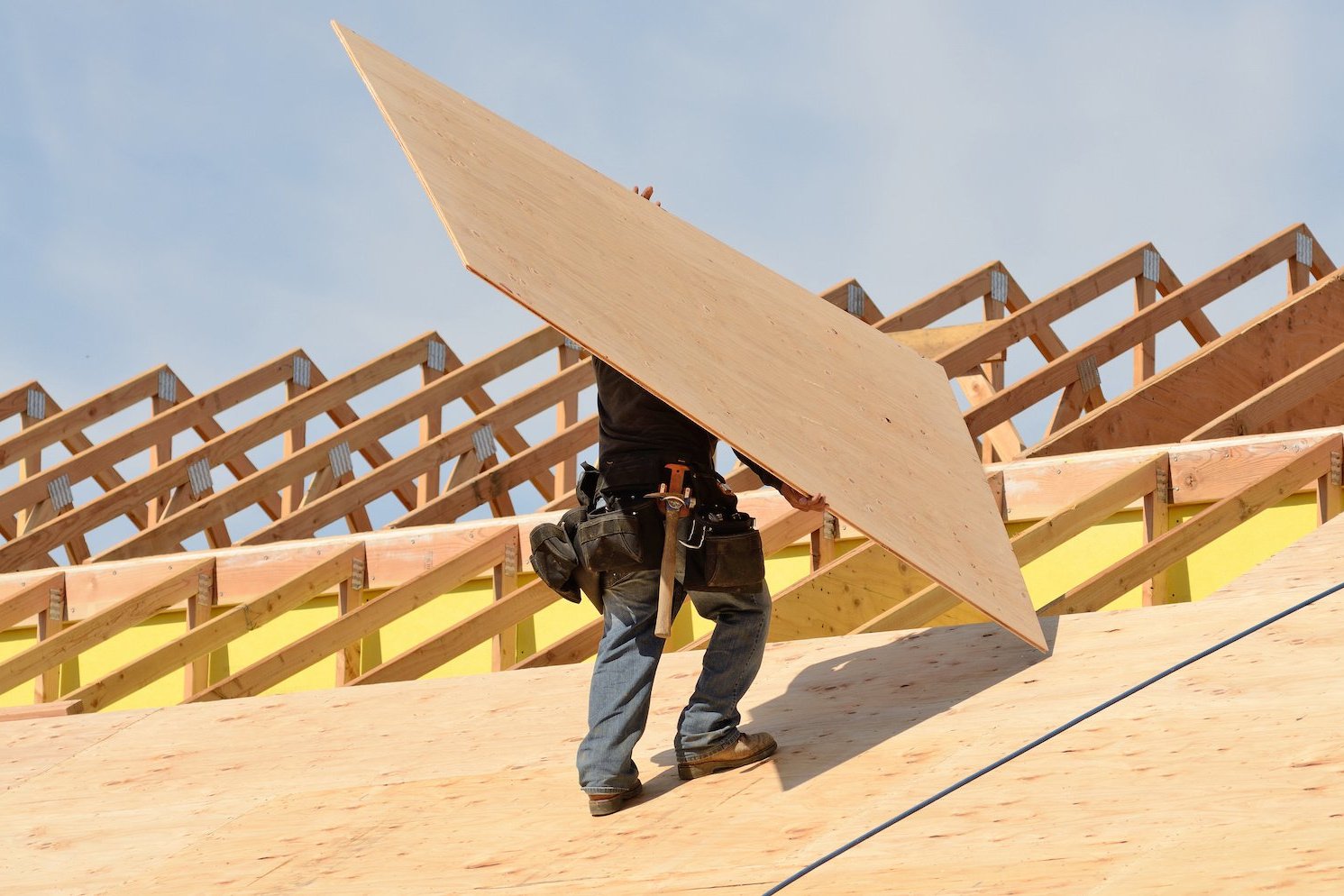
Why CDX Plywood is Recommended Over OSB
Given the comparison points, particularly concerning moisture resistance and dimensional stability, CDX plywood is generally the recommended choice for roof decking, especially in areas that experience significant rain, humidity, or freeze-thaw cycles. While OSB meets minimum code requirements and is widely used, its vulnerability to moisture-induced swelling and less reliable fastener retention over time can lead to premature roofing issues.
In areas like Troutdale, Oregon, which receives a substantial amount of precipitation throughout the year, the ability of the decking material to handle moisture is critical. Even with perfect shingle installation and underlayment, unforeseen leaks or condensation issues can expose the decking to water. When this happens, CDX plywood is far more likely to recover without permanent deformation compared to OSB, which can swell and create unevenness that telegraphs through the shingles, leading to an unsightly appearance and potentially compromising the shingle seal.
Furthermore, the superior fastener holding strength of plywood provides a more secure base for shingles. This is particularly important for resisting wind uplift, a common concern during storm events. While OSB is adequate when new and dry, any moisture exposure can degrade its ability to hold fasteners as effectively as plywood.
Choosing CDX plywood is an investment in the long-term durability and performance of your entire roofing system. The slightly higher upfront cost is often offset by the reduced risk of decking-related issues down the line, which can necessitate costly repairs or even premature roof replacement.
Recommendation: For a robust and long-lasting roof structure, prioritize the use of CDX plywood for your roof decking. Its performance advantages, especially regarding moisture handling and fastener retention, provide a more reliable foundation for your roofing materials.
The Roof Decking Installation Process
When you embark on a roof replacement project, understanding how the decking is handled can provide peace of mind.
- Removal of Old Roofing: The existing roofing materials (shingles, underlayment, and potentially old decking if it's damaged) are carefully removed down to the rafters or trusses. This is a critical step where the condition of the existing decking is fully assessed.
- Decking Inspection and Repair/Replacement: The underlying structure (rafters/trusses) is inspected for any damage or rot. The existing decking is then thoroughly inspected. Any panels showing signs of rot, water damage, significant swelling (especially common with old OSB), sagging, or pest infestation must be replaced. If the existing decking is severely deteriorated or is an older material like skip sheathing (which isn't suitable for modern shingles), a full deck-over with new plywood or OSB is necessary.
- Installation of New Decking: New OSB or plywood panels (typically 1/2 inch or 5/8 inch thick, depending on local codes and rafter spacing) are laid out and fastened securely to the rafters or trusses using appropriate nails or screws. Proper spacing (1/8 inch) is left between panels to allow for expansion. H-clips are often used between panel edges spanning rafters to provide support.
- Underlayment Installation: Once the decking is fully installed and secure, a layer of roof underlayment is applied. This can be asphalt-saturated felt paper or, more commonly today, synthetic underlayment. This layer provides a crucial secondary barrier against water penetration, protecting the new decking. Ice and water shield is often installed along eaves, valleys, and around penetrations for added protection, especially in areas prone to ice dams or heavy rain.
- Final Roofing Material: With the decking and underlayment in place, the new shingles, metal panels, or other roofing material is installed, fastened through the underlayment into the solid decking below.
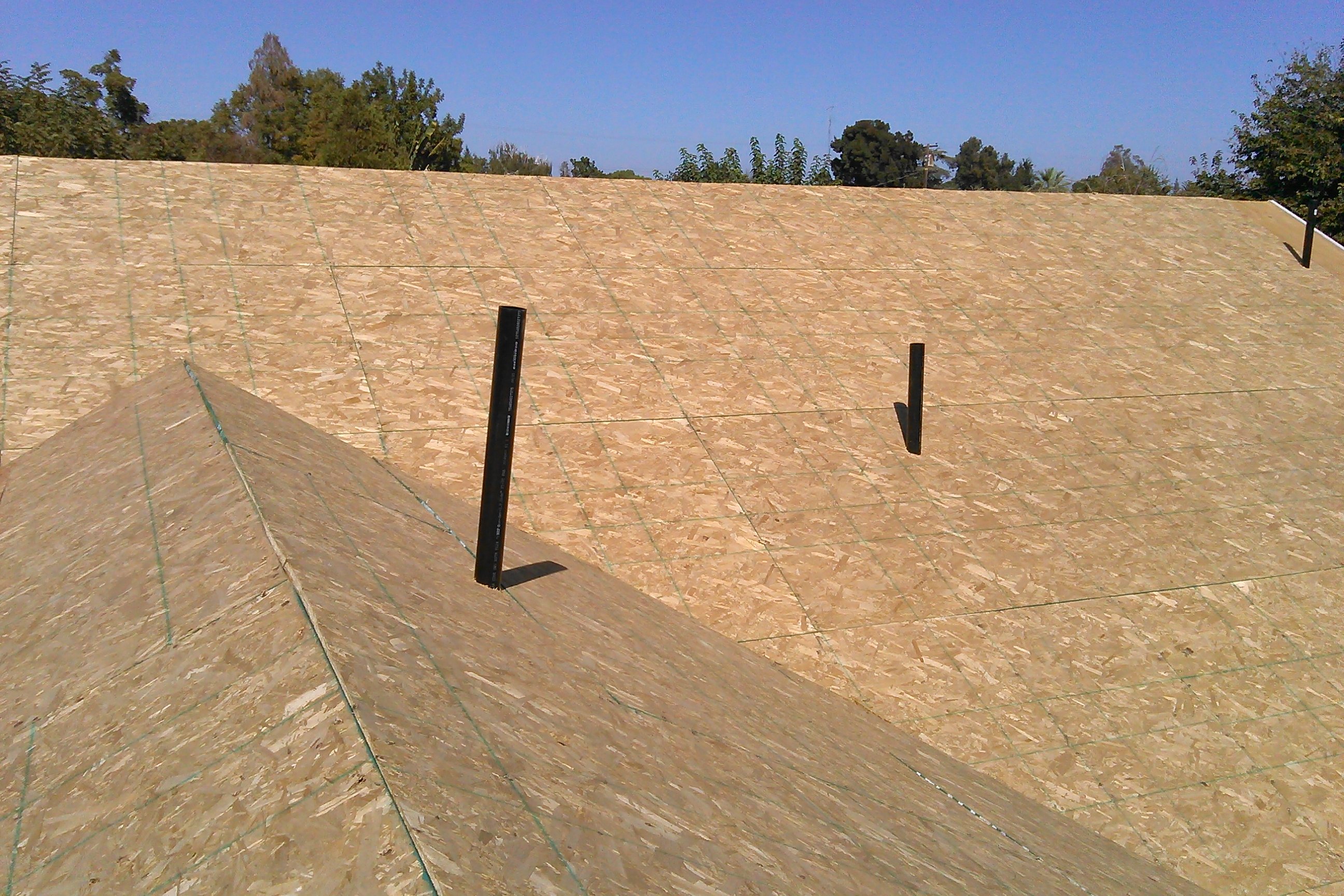
Safety Warning: Working on a roof is inherently dangerous. Always hire qualified, insured roofing professionals who have experience with roof decking installation and follow all safety protocols.
Signs Your Roof Decking May Need Attention
While the final roofing material takes the brunt of the weather, problems with the underlying decking can manifest in various ways, indicating it might need repair or replacement during a roof project:
- Visible Sagging or Bending: If sections of your roof appear to dip or sag between the rafters, it's a strong indicator that the decking has lost its structural integrity, often due to moisture damage or simply age.
- Water Stains on the Ceiling Below: Stains on the interior ceilings directly below the roof are a classic sign of a leak. While the leak source might be a shingle or flashing issue, prolonged water exposure will damage the decking.
- Mold or Mildew Growth: Visible mold or mildew in the attic space on the underside of the roof deck points to excessive moisture, which can lead to decking rot.
- Spongy Feel When Walking on the Roof: A soft or spongy sensation underfoot while on the roof indicates the decking is weak and potentially rotting. This is a serious safety hazard.
- Cupping or Buckling Shingles: If shingles are not lying flat or appear to be lifting in wavy patterns, it can sometimes be caused by underlying decking issues, particularly edge swelling if OSB was used.
- Loose or Missing Shingles: While often caused by wind damage, shingles that repeatedly come loose might indicate that the decking isn't holding fasteners properly, potentially due to deterioration.
- Pest Infestation: Termites, carpenter ants, or other wood-boring insects can damage roof decking, compromising its strength.
If you notice any of these signs, it's crucial to have your roof professionally inspected to determine the extent of the damage and whether the decking needs to be replaced.
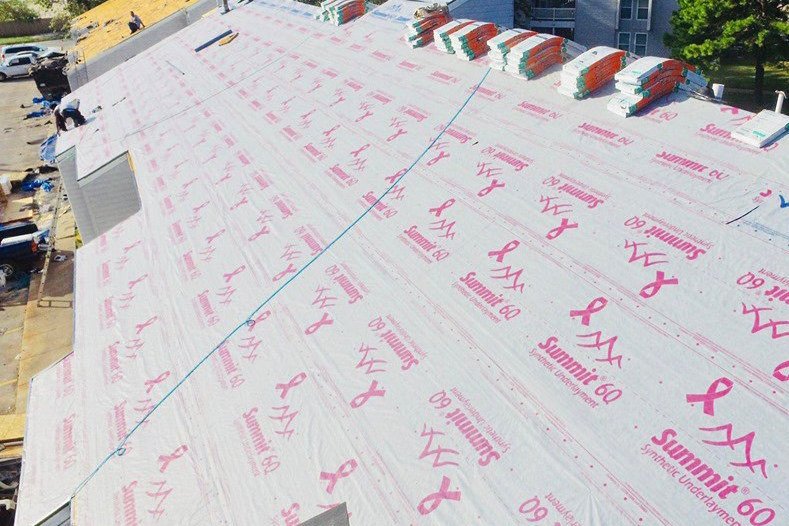
Planning Your Roofing Project: When to Get an Estimate or Book an Appointment
Understanding the condition of your roof decking is a vital part of any major roofing project. Whether you're planning a full roof replacement, budgeting for future home improvements, or dealing with an urgent issue like a leak, knowing the potential scope of work involving the decking is essential.
For non-urgent situations, such as:
- Planning a full roof replacement project in Troutdale, Oregon.
- Budgeting for future roofing needs.
- Getting a general idea of costs for comparing roofing options.
- Evaluating the condition of your roof and decking without immediate problems.
Getting an initial estimate is a smart first step.
If you're planning a roof replacement or need to budget for future work, you can quickly get an idea of the costs involved, including potential decking replacement, without waiting for an on-site visit.
Get your free instant roof estimate
This service provides a convenient way to begin the process and understand the potential investment required for a new roof, which inherently includes the cost of decking materials and labor for installation or replacement.
However, if you are facing more immediate concerns, such as:
- An active roof leak that needs to be stopped.
- Damage from a recent storm that requires urgent assessment.
- Any situation where you suspect significant damage to your roof or decking and need a professional inspection right away.
- Emergency repairs to prevent further water intrusion.
Delaying action can lead to more extensive and costly damage to your home's structure and interior. In these cases, arranging for a professional to inspect your roof promptly is the priority.
For urgent roofing issues like leaks or storm damage, don't wait. Connect directly with qualified local roofers who can assess the situation and provide immediate assistance.
Book a roofing appointment
This direct booking service is designed to quickly connect you with pre-vetted professionals who can address urgent roofing needs, including assessing the condition of your decking and performing necessary repairs or planning for replacement.
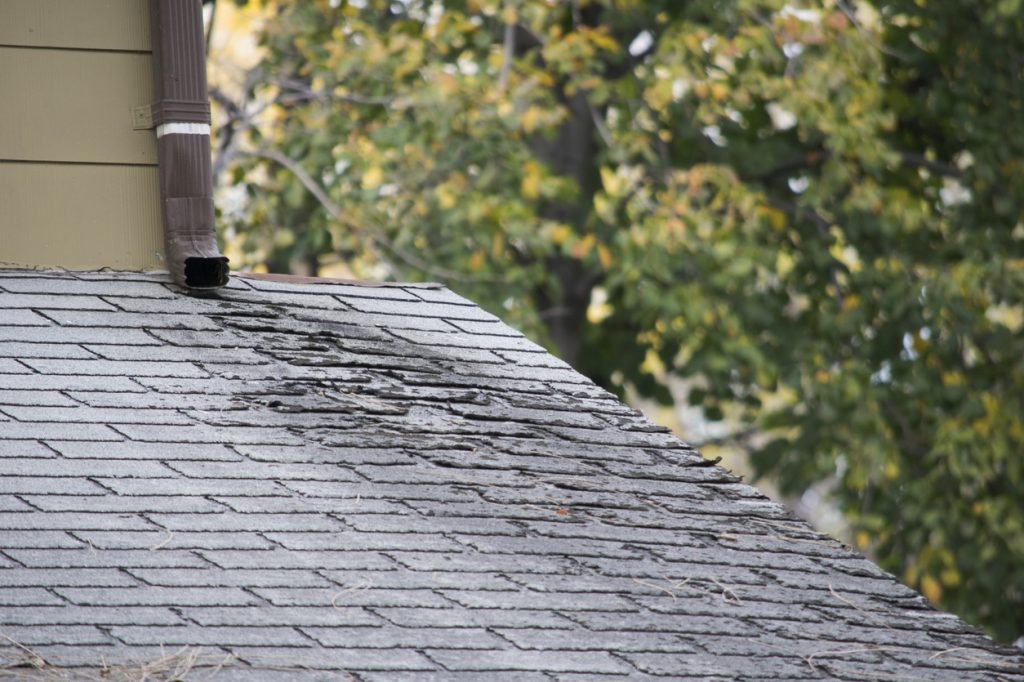
Frequently Asked Questions About Roof Decking
Addressing common questions can help homeowners feel more confident when discussing roof decking with contractors.
Q: What thickness of roof decking is required?
A: The required thickness of roof decking (OSB or plywood) depends on the spacing of your roof rafters or trusses and local building codes. Common thicknesses are 1/2 inch for rafters spaced 16 inches on center and 5/8 inch for rafters spaced 24 inches on center. Always consult with a qualified contractor to ensure the correct thickness is used for your specific roof structure and location.
Q: Can new shingles be installed over old decking?
A: It depends entirely on the condition of the old decking. If the existing decking is solid, flat, free from rot, mold, significant swelling, or structural damage, and meets current building code requirements, it may be possible to install new roofing over it after the old materials are stripped off. However, if there are any signs of deterioration, or if the decking material is outdated (like widely spaced skip sheathing), it must be replaced to ensure the new roof has a stable and durable base. Most professional roofers will recommend replacing older decking as a best practice during a full roof replacement.
Q: Is OSB always bad for roof decking?
A: No, OSB is not inherently "bad," and it meets minimum building code requirements when installed correctly and kept dry. It is a cost-effective option. However, its performance is significantly more susceptible to moisture damage than CDX plywood. In a climate prone to moisture, the risks associated with OSB (edge swelling, reduced fastener retention if wet) are higher, which is why many professionals recommend CDX plywood for greater long-term reliability and durability.
Q: What is the difference between CDX plywood and regular plywood?
A: CDX refers to a specific grade of plywood. 'C' and 'D' refer to the quality of the face and back veneers (C-grade has knots and defects that are plugged or sanded, D-grade has larger knots and defects). 'X' indicates that the adhesive used is suitable for exterior exposure, meaning it can withstand moisture without delaminating, though the wood itself is not waterproof. This exterior-grade adhesive is crucial for roof sheathing. Other grades of plywood may use interior adhesives not suited for potential moisture exposure.
Q: How does proper attic ventilation affect roof decking?
A: Proper attic ventilation is critical. It helps regulate temperature and, most importantly, removes moisture that rises from the living space or enters through minor roof imperfections. Good ventilation prevents condensation from forming on the underside of the roof deck and helps dry out the decking if it gets slightly wet. Poor ventilation can lead to moisture buildup, significantly shortening the lifespan of both OSB and plywood decking by promoting rot and mold growth.
Q: Can roof decking be repaired instead of replaced?
A: Small, localized areas of damage, such as a single soft spot or a small section of rot caused by a specific leak, can sometimes be repaired by cutting out the damaged section and replacing it with new decking material. However, if the damage is widespread, affects multiple panels, or is indicative of systemic moisture issues or structural weakness, a full decking replacement is usually necessary to ensure the long-term integrity of the roof.
Building a Solid Foundation for Your Roof
The choice of roof decking material is a foundational decision that impacts the entire lifespan of your roofing system. While OSB offers an initial cost advantage, the enhanced moisture resistance, dimensional stability, and fastener holding capability of CDX plywood provide a more reliable and durable base, particularly important for homes in areas like Troutdale, Oregon, where weather can put materials to the test. Investing in quality decking material like CDX plywood is an investment in the long-term structural integrity and performance of your roof, helping to protect your home for decades to come.
